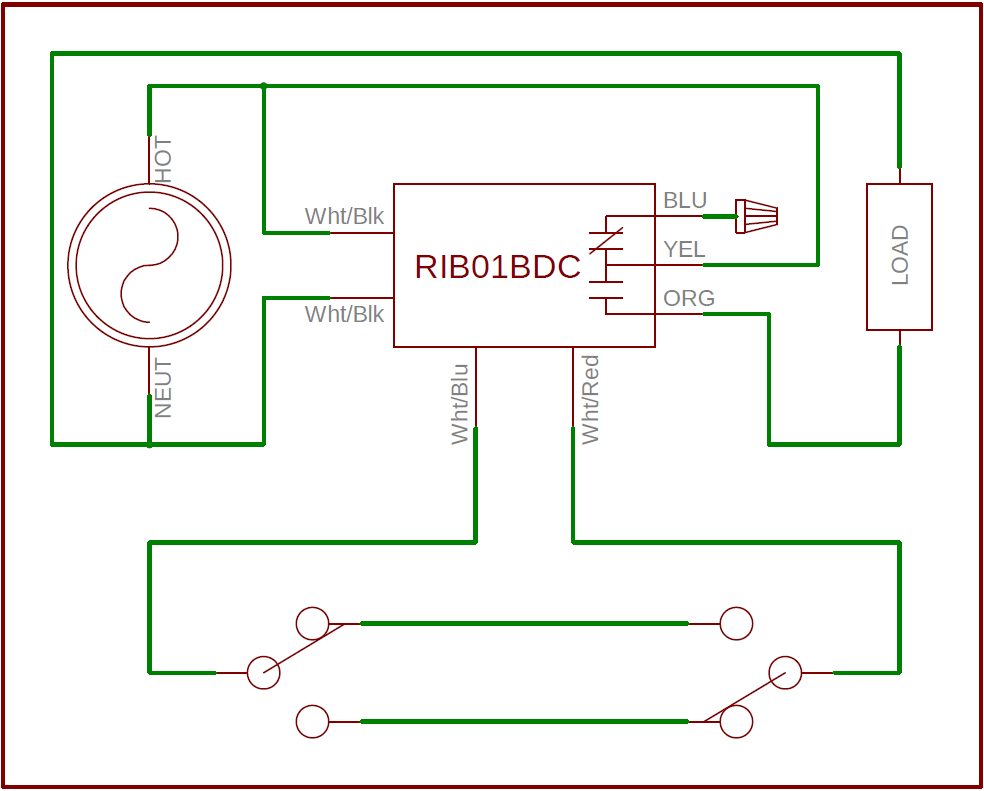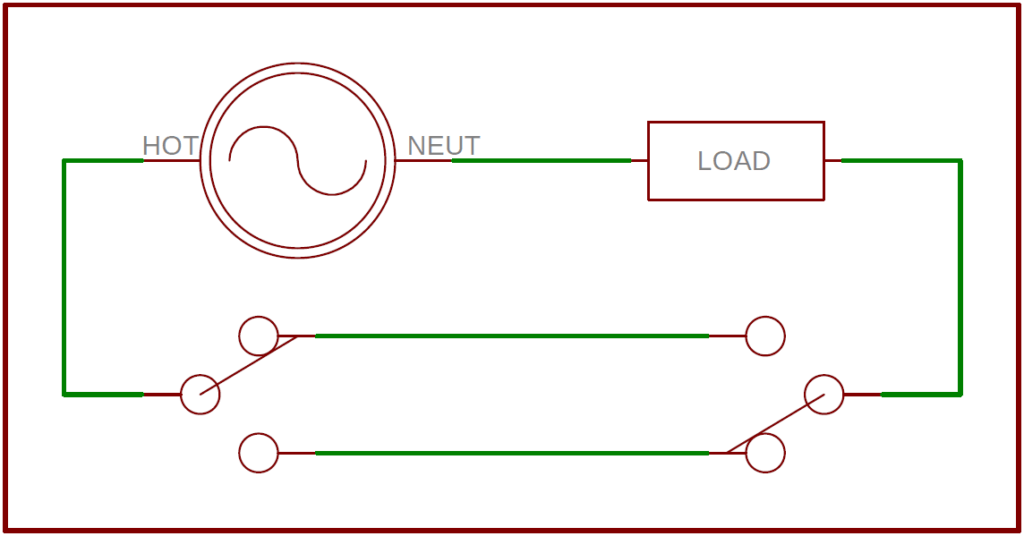Save Money with Dry Contact Relays

Way back in 2019, I wrote a blog titled, “RIB® Relays as 3 or 4-Way Switch.” As one would guess, it talked about using relays in multi-switch applications. Recently, a customer wanted to do a 3-way switch, but the switches were very far apart. This meant they would have to run a lot of large conductors to handle the current of the lighting load and compensate for the voltage drop on the conductor. We came up with a solution using our Dry Contact relays that would save them time and money.
The issue with most 3-way switch wiring is that the conductors connecting the two switches and load together all must carry the full current of the load. This also means those conductors are likely carrying high voltage and must be run in conduit. Now, imagine running this conductor and conduit across hundreds of feet. All just to have another switch on the other side of a large space. The costs to do this can become prohibitive. Fortunately, there is a way to run smaller conductor very long distances.In many cases, eliminating the need for conduit.
3-Way Switch with Dry Contact Relays

The diagram above shows one of our Dry Contact relays, RIB01BDC, wired with two SPDT switches. This achieves a 3-way switch application. The relay could be installed at the load location and would be powered by the same voltage as the load. The RIB01BDC must be powered by 120 Vac, so this relay would be used with a 120 Vac load. If the load were 208-277 Vac, the RIBD02BDC could be used.
In the typical 3-way switch application, shown below, the Hot feed is fed through both switches to get to the load. In the application with the relay, shown above, the two switches are connecting the Dry Contact Input wires on the RIB01BDC. When these two wires connect, the Normally Open (N/O) relay contact will close, and the load will be powered.

The real benefit of using the Dry Contact relay is that the Dry Contact Input (Wht/Red and Wht/Blu wires) is low voltage and Class 2 rated. That means the connection between the two switches does not have the same code requirements as those in the second diagram. The Dry Contact Input only passes microamps of current. Therefore, the length of wire between the two switches can be very long. For the relay to actuate, there needs to be less than one megaohm of resistance between the Dry Contact Input wires. That means someone using 18AWG wire could have their switches 150,000,000 feet apart, that’s roughly 28,400 miles. For reference the distance around the Earth is 24,901 miles. Your switches could be so far apart that they are back together again!
I admit that I have not tested this to its maximum distance in practice. In theory, the math says it works. If anyone out there tries it, please let us know.
